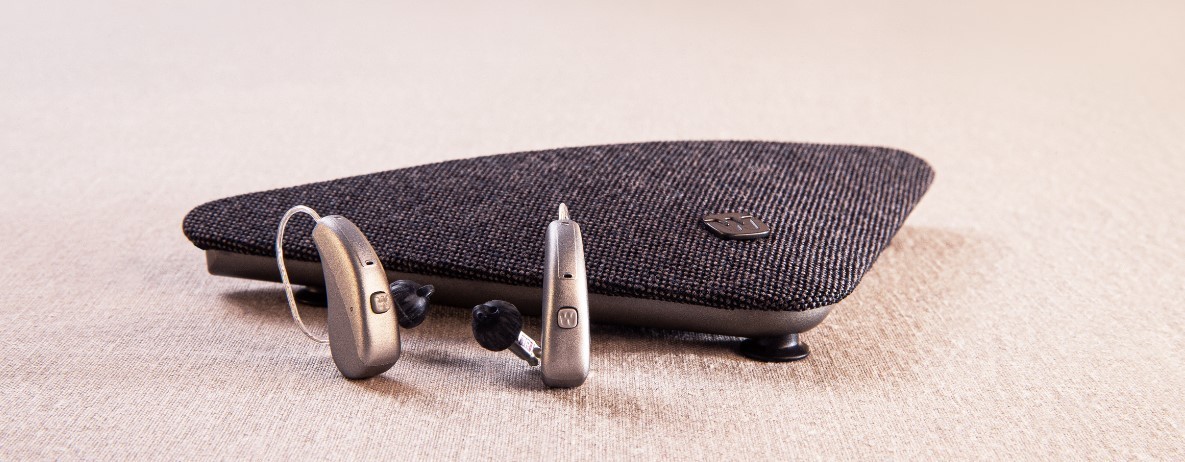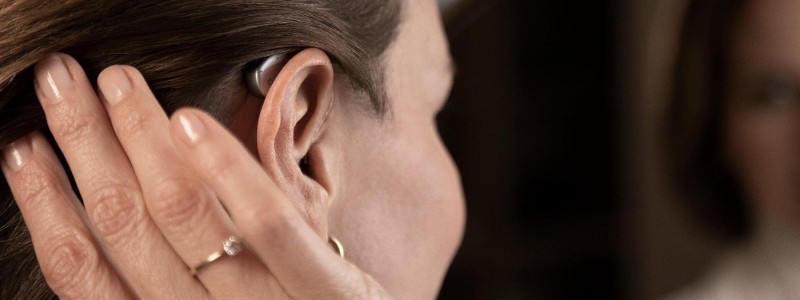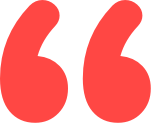
Head of Customer Content Experience

Audiology Expert & Founder

The Latest Hearing Aid Technology 2024
Predicting new developments in hearing aid technology for 2024
What will 2024 bring?
It is difficult to predict exactly what hearing aid technology will look like in 2024, as the field is constantly evolving and new technologies are being developed. However, we will likely see a continued trend toward the integration of artificial intelligence (AI), collaborative ecosystems, and other advanced technologies in hearing aids.
When people predict hearing aid technology advancements or how any industry is going to move forward it is no easy feat. The rate at which digital hearing aid technology has advanced over the last few years has given rise to increased competition within the industry itself. Inspiring consumers to want, need, and expect more from these devices.
Although hearing aids still consist of four main parts - today's modern hearing aids give consumers far more than those of the past. They have switched to, in some cases, complete automation and features that support hearing loss needs in all environments. This article goes through the audiology progressions so far and what we could look forward to in 2024.

2024 Hearing Aid Technology
Artificial Intelligence (AI) integration and Augmented Reality (AR) applications will continue
Artificial intelligence and biometric sensors will continue to impress
Anticipate further integration of AI in hearing aids, enhancing their adaptability to various listening environments. AI algorithms can dynamically adjust settings, analyse and adapt to the wearer's surroundings in real-time, automatically adjusting the volume and frequency of sound to optimise the listening experience.
This can be particularly helpful in noisy environments, where traditional hearing aids may struggle to distinguish between important sounds and background noise. Even though artificial intelligence isn't anything new in hearing aids - it will continue to up its game for 2024 and beyond.
For instance, towards the back end of 2023, we saw the 2nd generation of Phonak's health and fitness tracking features, especially the heart rate sensors, in the Audeo Lumity Fit model. This allows hearing aids to collect data on the wearer's physical activity, sleep, and other health metrics, which could be used to optimise the performance of the hearing aid.
We might find an increase in AR technology in hearing aids, providing wearers with augmented information about their surroundings. This could include visual indicators of sound sources, language translation, or real-time captions, enhancing communication in diverse situations. We saw this first in Signia's Augmented Xperience range and this technology has shown even further developments in the IX.
Machine learning and powerful processing chips will continue progression
Continued progress in machine learning algorithms and more personalisation will enable hearing aids to learn from the wearer's preferences and behaviours. This technology could adapt to individual listening habits, automatically adjusting settings and improving overall user satisfaction.
More high-performance chips will no doubt continue to be the norm, which will make quicker and more efficient tailor-made amplification and connectivity. Resulting in a higher level of personalisation for wearers.
Hearing aid-assisted technology, features, remote care & apps will continue to rise
Hearing aid apps are software applications that can be used to control and customise the settings of a hearing aid, as well as to monitor and track the wearer's hearing health. 2024 may bring even more advanced and sophisticated hearing aid apps that offer a wider range of features and capabilities.
Such as more hearing aids with the ability to customise the volume and frequency settings of the hearing aid in real-time, or to switch between different listening profiles depending on the environment. There will no doubt be more evolved hearing aid apps offering features such as speech recognition or language translation, which could be particularly useful for people with hearing loss who need additional communication support.
In terms of design, we will likely see a continued trend towards user-friendly, intuitive hearing aid apps that are easy to navigate. More hearing aid apps may offer features such as voice control, which could make it easier for wearers to control their hearing aids without the need for buttons or physical elements to manage.

What's new in hearing aid technology for 2024?
Bluetooth will continue to be a spotlight
Bluetooth hearing aid technology will continue to revolutionise
The legacy of Bluetooth hearing aid technology has been evolving for years and has revolutionised the way people with hearing loss experience everyday life. In 2024, expect advancements in wireless connectivity, enabling seamless integration with a broader range of devices.
Enhanced compatibility with smartphones, smart TVs, and other IoT devices will allow users to have a more connected and interactive experience with their hearing aids. We also predict there will be more In-Ear products offering low-consumption Bluetooth and integrated rechargeable technology. Therefore, in terms of design, it is likely that we will see a continued trend toward smaller, more discreet hearing aids.
2024 will continue to deliver a more eco-conscious mindset
Our attitude towards the environment is shifting. It is a positive leap in the right direction, as we become more sensitive to the environment each year. We are reacting to world problems such as climate change and extinction rebellion and making more conscious decisions. The increased news exposure on this topic has promoted the thought process of changing the way we dispose of certain products.
There has been a definitive change in the way we want to live our lives, as we take stock and look at more rechargeability options. A future that is eco-smart and thoughtful, with fewer batteries going into our landfills. In a world where convenience is key, we don’t think the consumer attraction for this will change as portable recharging pods continue to become smaller providing nifty on-the-go charging.
This may also instigate a growing focus on sustainability - leading to hearing aids being designed with eco-friendly materials and manufacturing processes. This shift aligns with broader trends in consumer preferences for environmentally conscious products.
Hearables will continue to normalise hearing aids
Although there are various audiology choices available for consumers today that we cannot control, like hearables and over-the-counter offerings (OTC) - there remains a need for the provision of knowledge and assistance. Patients still want to gain expert guidance, support, and aftercare from an actual person whom they can trust.
However, the hearables market has normalised and popularised hearing aids, which in turn, will eventually change the negative stigma surrounding them. This has the potential to inspire people to seek medical help for their hearing loss before the seven-year average – something this industry is ceaselessly passionate about.
In conclusion
The future of hearing aid technology in 2024 is likely to be marked by a convergence of advancements in AI, connectivity, remote care, and biometrics. These innovations aim to not only improve the technical capabilities of hearing aids but also enhance the overall user experience, making auditory health management more personalised, accessible, and interconnected with the broader world of technology.
Why Choose Us?
- FREE Hearing Tests
- Best Hearing Aids and Prices
- FREE Aftercare for Life
- FREE Home Visits
- 200+ Local Audiologists
- 60 Day Money Back Guarantee
Looking for more information on the latest 2023 hearing aids?
Here, at Hearing Aid UK, we are looking forward to seeing how the audiology industry unravels in regards to 2023 hearing aid launches, new hearing aid platforms and additional styles.
If you would like to discuss anything within this article or would like any advice on hearing healthcare, hearing aids or how we can support you locally - call us free on 0800 567 7621
Read Next:
What's included in our hearing aid prices?
Our specialist service includes:
Do not spend hundreds of pounds without getting a second opinion from us.
Please call us on 0800 567 7621
 Not only are the prices great, but the service is fantastic! Many thanks to your team.
Not only are the prices great, but the service is fantastic! Many thanks to your team.Other pages you might find useful
Common FAQs when researching hearing aids and hearing loss
If you are looking at this page then it is likely that an audiologist has suggested that you purchase this particular hearing aid, so is this the best model for you?
In general, any audiologist will always be recommending to you the model that best suits your needs. Here is a useful check list to make sure that is the case.
- Audiologist level of knowledge. The audiologist you have seen will hopefully have a wide knowledge of all available hearing aids, however some will only be familiar with a small number of brands and therefore may not really be in a position to know which model is the best for you. It is OK to challenge their recommendation and ask them to justify why this particular brand is the one for you.
- Do research. Read about the hearing aid that was recommended. Does it seem like it will suit your lifestyle? Does it have more or less features than you need?
- Be aware of sales targets. Many high street retailers have specific tie-ins to a particular manufacturer/brand. The hearing aid they have suggested may still be the correct one for you, but do your research so that you know why they might have recommended it.
If in doubt, feel free to give us a call. That's what we're here for.
If you have a significant hearing loss in both ears, you should be wearing two hearing aids. Here are the audiological reasons why:
Localisation. The brain decodes information from both ears and compares and contrasts them. By analysing the miniscule time delays as well as the difference in loudness of each sound reaching the ears, the person is able to accurately locate a sound source. Simply put, if you have better hearing on one side than the other, you can't accurately tell what direction sounds are coming from.
Less amplification required. A phenomena known as “binaural summation” means that the hearing aids can be set at a lower and more natural volume setting than than if you wore only one hearing aid.
Head shadow effect. High frequencies, the part of your hearing that gives clarity and meaning to speech sounds, cannot bend around your head. Only low frequencies can. Therefore if someone is talking on your unaided side you are likely to hear that they are speaking, but be unable to tell what they have said.
Noise reduction. The brain has it’s own built in noise reduction which is only really effective when it is receiving information from both ears. If only one ear is aided, even with the best hearing aid in the world, it will be difficult for you to hear in background noise as your brain is trying to retain all of the sounds (including background noise) rather than filtering it out.
Sound quality. We are designed to hear in stereo. Only hearing from one side sounds a lot less natural to us.
For most people, the main benefit of a rechargeable hearing aid is simple convenience. We are used to plugging in our phones and other devices overnight for them to charge up.
For anybody with poor dexterity or issues with their fingers, having a rechargeable aid makes a huge difference as normal hearing aid batteries are quite small and some people find them fiddly to change.
One downside is that if you forget to charge your hearing aid, then it is a problem that can't be instantly fixed. For most a 30 minute charge will get you at least two or three hours of hearing, but if you are the type of person who is likely to forget to plug them in regularly then you're probably better off with standard batteries.
Rechargeable aids are also a little bit bigger and are only available in behind the ear models.
Finally, just like with a mobile phone, the amount of charge you get on day one is not going to be the same as you get a few years down the line. Be sure to ask what the policy is with the manufacturer warranty when it comes to replacing the battery.
For most people, the answer is yes. But it's never that simple.
The majority of hearing problems affect the high frequencies a lot more than the low ones. Therefore open fitting hearing aids sound a lot more natural and ones that block your ears up can make your own voice sound like you are talking with your head in a bucket. Therefore in-ear aids tend to be less natural.
However the true answer is we can't tell until we have had a look in your ears to assess the size of your ear canal, and until we have tested your hearing to see which frequencies are being affected.
People with wider ear canals tend to have more flexibility, also there are open fitting modular CIC hearing aids now that do not block your ears.
There is also the age old rule to consider, that a hearing aid will not help you if it's sat in the drawer gathering dust. If the only hearing aid you would be happy wearing is one that people can't see, then that's what you should get.
Most people can adapt to any type of hearing aid, as long as they know what to expect. Have an honest conversation with your audiologist as to what your needs are.
Generally speaking, six or more. Unless it's none at all.
The number of channels a hearing aid has is often a simplistic way an audiologist will use to explain why one hearing aid is better than another, but channels are complex and it is really not that straightforward.
Hearing aids amplify sounds of different frequencies by different amounts. Most people have lost more high frequencies than low and therefore need more amplification in the high frequencies. The range of sounds you hear are split into frequency bands or channels and the hearing aids are set to provide the right amount of hearing at each frequency level.
Less than six channels and this cannot be done with much accuracy, so six is the magic number. However, a six channel aid is typically very basic with few other features and is suitable only for hearing a single speaker in a quiet room. The number of channels is not what you should be looking at, it's more the rest of the technology that comes with them.
As a final note, different manufacturers have different approaches. One method is not necessarily better than any other. For example some manufacturers have as many as 64 channels in their top aids. Most tend to have between 17 and 20. One manufacturer has no channels at all.
Hearing aids are easily lost, misplaced or damaged and typically are one of the most expensive personal possessions an individual can own. We offer hearing aid warranty cover for £80 per year per aid. Find out more here
All our audiologists use the very latest technology and provide the full range of tests to accurately measure your hearing for free. Find out about what we offer all our customers here
Hearing Aid UK offers all their customers free home visiting services and home visits for hearing aids - Including hearing tests, fittings, maintenance, check-ups and much more in the comfort of your own home and at your convenience. Find out more information here
Here, at Hearing Aid UK, we are dedicated to offering low hearing aid prices. We achieve this by having no head office and low marketing costs. Our hearing aid prices are amongst the lowest you will find anywhere in the world.
Ask the Experts
6 Morton Lane
Walkwood
Redditch
Worcestershire
B97 5QA
Latest Launch
When we refer to a product as 'Latest Launch', we mean it is the latest to be released on the market.
New
When we refer to a product as 'New', we mean that the product is the newest hearing aid model on the market.
When we refer to a product as 'Superseded', we mean that there is a newer range available which replaces and improves on this product.
Older Model
When we refer to a product as an 'Older Model', we mean that it is has been superseded by at least two more recent hearing aid ranges.